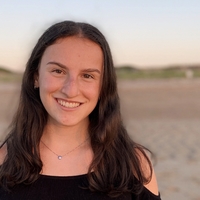Fall Research Expo 2020
Recellularizing Engineered Cartilage for Pediatric Airways
Decellularization shows promise as a scaffold fabrication technique for tissue engineering, but cartilage poses recellularization challenges with its dense matrix and sparse cell population. We evaluated cell reinvasion using image analysis with ImageJ in a new scaffold derived from cartilage decellularized using a novel technique. For different seeding protocols we compared cell density, invasion distance, and nuclei to nuclei separation. Scaffolds seeded with 200k cells and incubated for 1 week in a Transwell plate and 1 week in a Bioreactor proved to be the best condition. Next, we will assess differentiation in these scaffolds.
PRESENTED BY
PURM - Penn Undergraduate Research Mentoring Program
College of Arts & Sciences 2023
Advised By
Paul Gehret
PRESENTED BY
PURM - Penn Undergraduate Research Mentoring Program
College of Arts & Sciences 2023
Advised By
Paul Gehret

Comments
Fascinating and important…
Fascinating and important work, Leah. Is there a reason why you are using stem cells as models for cell migration in this novel system? When (hopefully) this moves further toward implementation in animal models, etc., is there a comparable pool of tracheal stem cells that can be transplanted or will they be more mature/differentiated?
Very Interesting
Hi Leah, I found your project very interesting and innovative. I think tissue engineering is a really cool technique that, once streamlined, could help many people.
Thanks, Elisa
Really effective poster
I found your poster to be extremely effective, and your video was so engaging! Even as a non-STEM major, I'm so interested in hearing more about your findings! Great work